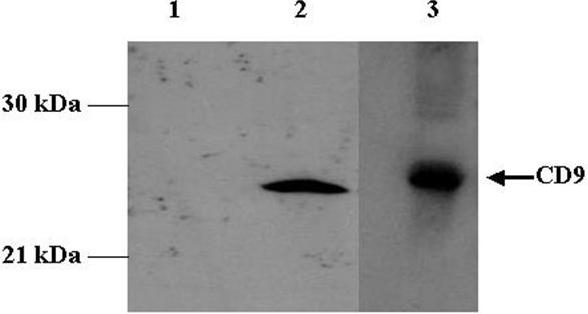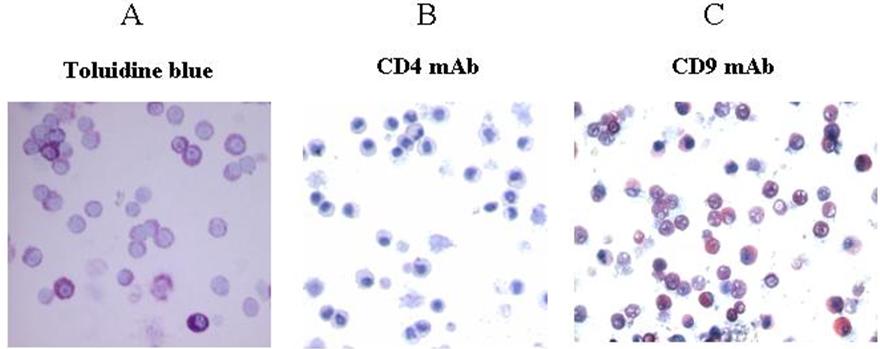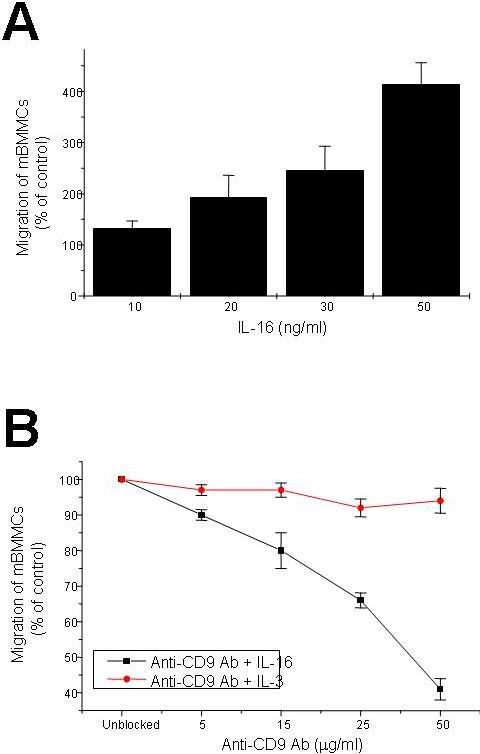Human and mouse mast cells use the tetraspanin CD9 as an alternate interleukin-16 receptor
Blood Qi et al. 107: 135
Files in this Data Supplement:

Lysates of non-transfected HMC-1 cells (lane 3) and CHO cells transfected with the expression vector pcDNA3 lacking (lane 1) or containing a CD9 cDNA (lane 2) were separated by SDS-PAGE under non-reducing conditions. The resulting protein blot was stained with anti-CD9 mAb. Molecular weight markers are shown on the left.

mBMMCs were stained with toluidine blue (A), rat anti-mouse CD4 mAb (B), or rat anti-mouse CD9 mAb (C).

(A) IL-3-developed mBMMCs were washed with PBS and then exposed to IL-16 (10-50 ng/mL) in the absence of IL-3. (B) The ability of rat anti-mouse CD9 mAb to inhibit the IL-16- and IL-3-mediated chemotaxis of mBMMCs also was evaluated. In these experiments, IL-3-developed mBMMCs were washed and exposed to the indicated amounts of anti-CD9 mAb for 1 hour. The treated cells were then exposed to IL-16 (50 ng/ml) or IL-3 (20 ng/ml) for 3 hours. The depicted curves are the percent decreases in migration of the two populations of mouse MCs relative to the control cells that did not encountered anti-CD9 mAb.

HMC-1 cells were cultured in the presence of different amounts of CD9-sense or -antisense oligonucleotides. The subsequent chemotactic responses of the treated cells to IL-16 (40 ng/mL) were then determined. The data represent the mean values ± SD of 3 experiments.